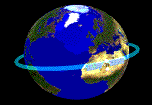| |

Try out these two pages for more info on this chapter's topic
CpSurf- Hewitt's Companion Web Page for this chapter
HyperPhysics - Orbit Concepts
****ATTENTION: THIS PAGE USES A COLLAPSIBLE OUTLINE****
IF YOU ONLY SEE THE TOPIC HEADINGS NEXT TO THE RED STARS, CLICK ON THE BULLETS
(STAR) TO EXPAND OR COLLAPSE A TOPIC!! FOR SPEED, LARGER IMAGES ARE
THUMB-NAILED. IF YOU WANT TO SEE THE FULL SIZE IMAGE, CLICK ON THE
THUMBNAIL OF IT TO EXPAND. USE YOU 'BACK' ARROW TO RETURN
top
of page
|